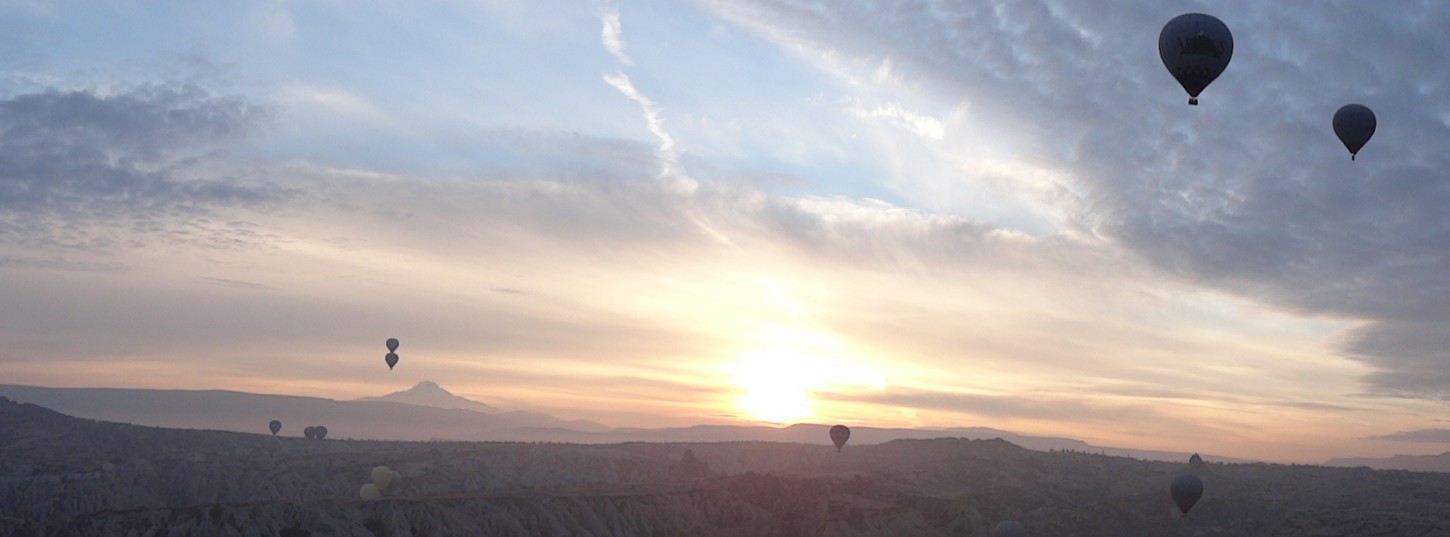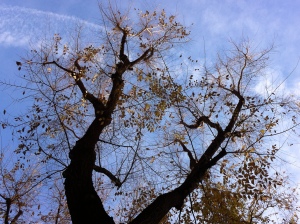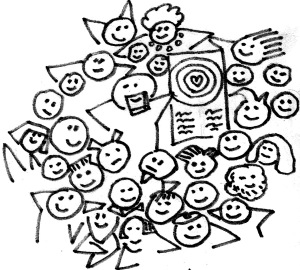
Today I found inspiration in an interview with Ocean Robbins, co-founder of the Food Revolution Network. The discussion focused on eating for a healthy body and a healthy planet. One anecdote in particular stuck out as an amazing testament to the effect that diet can have on our health. It was especially touching because it told the story of a father and son who disagreed for decades, but eventually found mutual understanding. I hope you can keep all of the different Robbins straight.
Ocean’s father, John Robbins, is the son of Irvine Robbins, one of the founders of Baskin Robbins. When he was in his 20’s John’s uncle, Burt Baskin, died from heart disease while still under the age of 60. John made a decision to switch to healthy eating and eventually became the author of Diet for a New America. John Robbin’s stepped away from the family business and was barred from the family fortune. He became jokingly known as the “rebel without a cone.” Later in life John’s father, who had been consuming the Standard American Diet plus a couple scoops of BR 31 flavors each day, was experiencing heart issues, high blood pressure and diabetes. Ironically, Irvine’s doctor recommended he read Diet for a New America. Irvine had the good sense to take his son’s advice after living a different lifestyle for so long. He had a lot of success with it, coming off of all his medications and living for many more years.
As has been made visible with many food documentaries recently, it is pretty astounding how some of the “disease of affluence” can often times be reversed just with our diet. I saw one Ocean Robbin’s quote on the internet today that said, “What we eat literally becomes us.” I was blown away by story above, as I didn’t really know much about the history of Baskin Robbin’s and all that had transpired. I was particularly interested because I had read one of John Robbin’s other books titled Healthy at 100 and didn’t make the connection until now. It is another fascinating read and helped spark my interest in longevity, traditional diets, and the connection between what we eat and how we feel.
The interview I heard today was another part of the Shift Network’s “Winter of Wellness,” that I had blogged about on Sunday. It is still available for another 44 hours or so. The version of the story told above is from what can be heard in the interview, but more details are available in this article from The Independent. Below I’ve paraphrased some other words of wisdom that Ocean Robbins shared in his talk.
The first part relates to how we share our beliefs with others in a non-judgmental way:
“If you want love in your life be around people who bring out your love…if you want more health choose to surround yourself with people who make you feel healthy……….same thing about food. That said we also live in a world where a lot of people are not going to be eating the way we do. And so, I think part of what’s called for in us as human beings who love other human beings is that we not judge, we not alienate, we not feel more…there’s a tendency to get kind of self-righteous and dogmatic and be more vegan than thou, more raw than thou, more paleo than thou, you know…..when we do that we create a gap and we actually make it harder for the other person to bridge that gap and connect with us. Dr. Martin Luther King said, ‘ You have no moral authority with those who can feel your underlying contempt.’ So I believe we need to stand in our moral authority by holding our love and our respect for other human beings with whom we walk this earth and bringing love and connection into those relationships, and always remembering that love is more important, relationships are more important than being right. In that sense then, we need to find some balance I think of living and letting live, while at the same time being true to our integrity, and frankly, sharing our truth with people that we care about that we think might benefit from it. You know, when my grandpa was near death and on all of those medications his doctor did him a great service by giving him my dad’s book and telling him what it could do for his life and I am so glad that my grandfather had the incredible courage to be willing to listen to that. So there are times when we need to level with people and we need to tell them the truth about what see and what we learn and give them the the resources that we may have gained benefit from. At the same time to do so in a way that is respectful, that is honoring of who they are….”
The second paraphrase is his response when the interviewer asked if he had any parting words for the listeners:
“I think there are more than 7 billion parts to play in the healing of our world, we’ve all got a niche, we’ve all got gifts we’ve all got suffering. Whatever you’ve been through, whatever support you’ve received, whatever struggles you’ve endured, they are part of you now and they are part of your unique, absolutely precious contribution that you get to make in this world. So my biggest advice is take the next step, and keep moving, because I think that procrastination and inertia are the thieves of destiny. And so most critical, is not that you get it right, not you nail it perfectly, but that you be on the learning journey. That you know wherever you are there is a next step towards greater congruency with who you are, with what you’re here for, with what you love, with what you are truly committed to in this life and I want to honor and thank you for all the ways that you step out with courage and tenacity and vision and boldness on behalf of what you love, and I want to let you know that we are here with you…the Food Revolution Network, the Winter of Wellness….all of the people who are struggling and living and loving and dreaming and standing up for a better way on this planet are here with you and we stand with you and we work with you and eat with you and we celebrate with you as you step into the calling that is your life. Thank you for being who you are, for giving your gift, for eating and living and loving in congruence with what you cherish.”
What a loving and supportive message. I hope you’ve enjoyed Ocean’s message as much as I have.









